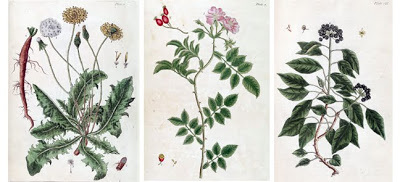Book of the Week: World Health Day & Medicinal Plants
April 7, 2011 is World Health Day. This year, the focus of World Health Day is Antimicrobial resistance, which is a type of drug resistance where microorganisms are able to survive exposure to antibiotics. To combat the spread of this problem, the World Health Organization is releasing a six-point policy package. These six points include:
- Commit to a comprehensive, financed national plan with accountability and civil Society engagement
- Strengthen surveillance and laboratory capacity
- Ensure uninterrupted access to essential medicines of assured quality
- Regulate and promote rational use of medicines, including in animal husbandry, and ensure proper patient care
- Reduce use of antimicrobials in food-producing animals
- Enhance infection prevention and control
- Foster innovations and research and development for new tools
For our recognition of World Health Day, we thought we’d highlight one of our rare books on medicinal plants. So, this week we feature A Curious Herbal: Containing Five Hundred Cuts, of the Most Useful Plants, Which are Now Used in the Practice of Physick Engraved on Folio Copper Plates (1737-39), by Elizabeth Blackwell. The purpose of this work, as is stated in the Introduction, is,
“The Undertaker, being desirous to make this Work more useful to such as are not furnished with other Herbals, is resolved (for their sake) to give a short description of each plant, the place of growth, and time of flowering, with its common uses in physick, chiefly extracted from Mr. Joseph Miller’s Botanicum Officinale with his consent, and the ordinary names of the plant in different languages.”
For our post, we selected just a few of the five hundred plants discussed in this work, and present them to you. Take a look at these, examine the many other natural remedies not presented in this post, and read more about World Health Day and consider what you might be able to do to help.

Useful for “provoking urine and strengthening the stomach”
Strengthens the stomach, cools the heat of fevers, as well as useful in the treatment of “coughs, spitting of blood, and scurvey”
“Mr. Boyle commends a large dose of the full ripe berries as a remedy against the plague. The gum is said to take spots and freckles out of the face.
Can be used as a remedy for tooth-aches and to kill Lice
Useful for treatment of pestilential fevers, “and is useful to drive anything out from the heart, for which it is given in the small pox and measles”
Useful for treating “obstructions of the liver and spleen,” and is used to “dissolve congealed blood and to provoke urine”
This week’s book of the week, A Curious Herbal: Containing Five Hundred Cuts, of the Most Useful Plants, Which are Now Used in the Practice of Physick Engraved on Folio Copper Plates (1737-39), by Elizabeth Blackwell, was contributed by the Missouri Botanical Garden.






Medicinal Plants and Massage Therapy: Always a good lifestyle for a healthy living.
By the way, if the author Elizabeth Blackwell published this book during the inquisition, she'd be dubbed a witch and burned alive.
–Massage Jackson MS
NOT FOR POSTING–
Just thought you'd you'd want to correct the spelling of Dracontium in this interesting Book of the Week. The link to the genus works.
Always grateful for BHL!
Karen
karen.reeds@verizon.net
Our pleasure! We're glad you liked it!
I read an article and knew about world health and medicinal plants book. Thanks for sharing this post.